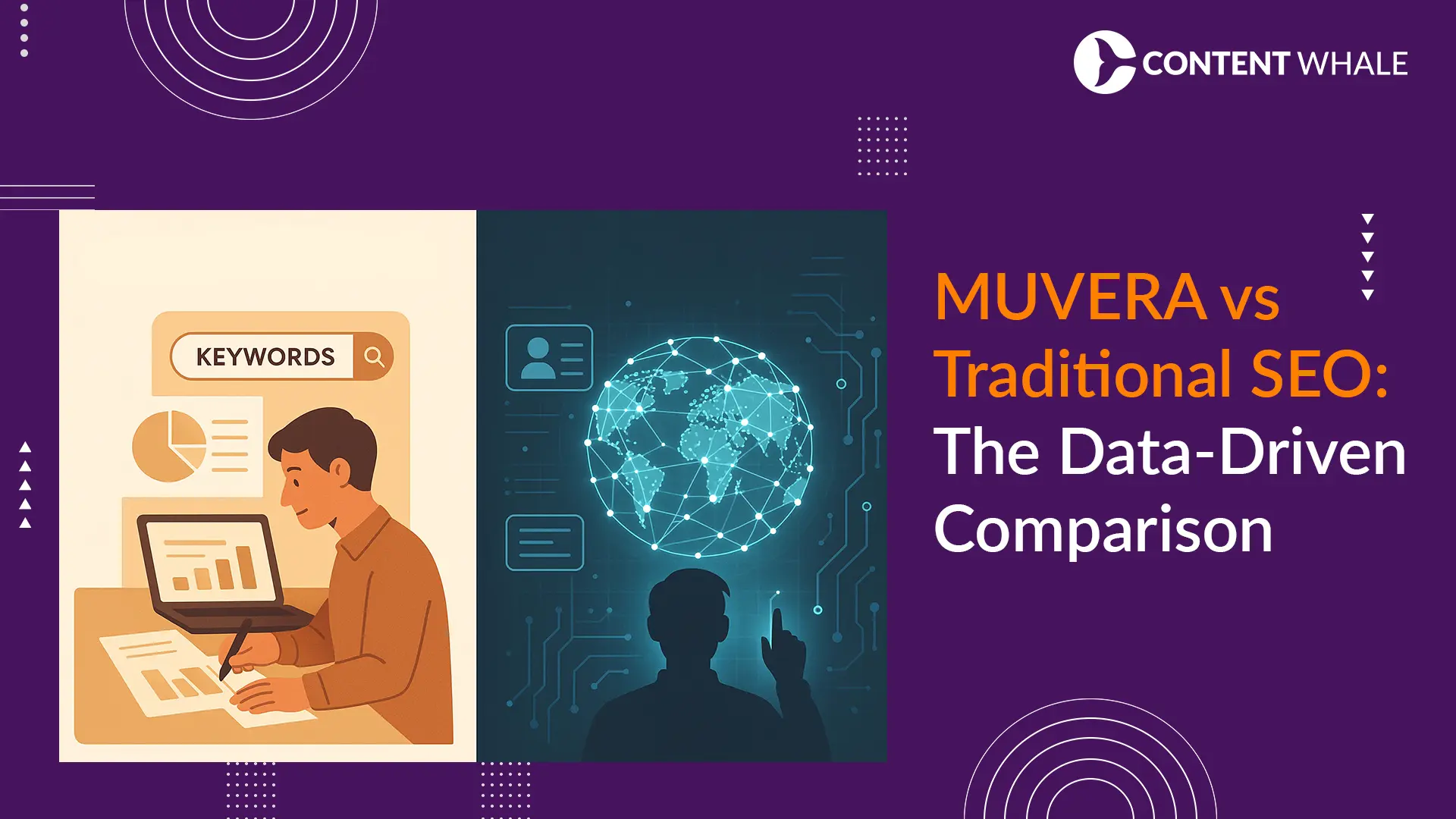LLM optimisation is the difference between your brand being cited by AI or completely ignored and most businesses don’t even know they’re losing. AI Overviews now dominate 47% of Google searches whilst ChatGPT serves 700 million weekly users and Perplexity handles 780 million monthly queries (Source).
The brutal reality: only 8% of users clicked website links when AI summaries appeared, meaning your Google ranking means nothing if AI platforms don’t cite you (Source).
LLM optimisation structures content so AI models understand, recall, and cite your brand whilst LLM seeding strategically places your brand in sources AI models reference. Traditional SEO focuses on clicks, but AI search optimisation focuses on earning citations in AI-generated responses. This guide will reveal how AI models interpret content, why they cite certain brands over others, the exact strategies dominating AI search results, and the metrics proving your visibility progress.
The Rise of AI-Driven Search and Answer Engines
AI Overviews now appear in 47% of Google searches, fundamentally changing user behaviour. ChatGPT has reached 700 million weekly active users globally (Source). Perplexity processes over 780 million monthly queries (Source).
Key statistics showing the AI search shift:
- Only 8% of users clicked website links when AI summaries appeared (Source).
- Citations matter more than traditional rankings.
- Zero-click searches dominate AI-powered results.
Difference Between Traditional SEO and LLM Optimisation

Traditional SEO focuses on:
- Keyword rankings and backlinks.
- Domain authority and page speed.
- Driving website traffic.
LLM optimisation focuses on:
- Entity clarity and recognition.
- Machine-parsable structure.
- Earning citations in AI responses.
The goal shifts from driving clicks to becoming the authoritative cited source.
How “Seeding” Influences LLM Understanding of Your Brand
LLM seeding establishes your brand’s presence in sources that AI models reference:
- Wikipedia entries and knowledge bases.
- Industry publications and academic papers.
- Podcast transcripts and conference proceedings.
- Structured databases and directories.
If your brand appears consistently in high-quality contexts, AI associates you with topics.

Understanding How Large Language Models Interpret Content
AI models process text as patterns, relationships, and statistical probabilities. Understanding this process helps you create content these systems prioritise.
What Happens When an LLM “Reads” Your Website?
When AI models process your website, they extract entities, relationships, and context.
The AI extraction process:
- Entities: People, places, products, or concepts.
- Relationships: How entities connect within content.
- Context: The semantic environment around information.
Clear entity definitions help models form accurate associations. Ambiguous content creates weak associations that AI models ignore.
Role of Entities, Context, and Credibility in AI Responses
When someone asks “What is LLM optimisation?”, models search for related entities. If your brand appears consistently alongside these entities, you become an authority.
Credibility factors AI models evaluate:
- Domain age and reputation.
- Wikipedia presence and citations.
- Media mentions and press coverage.
- Structured data verification.
Specific examples with data points create stronger contextual signals for citations.
Why LLMs Prefer Structured, Factual, and Source-Aligned Data?
AI models favour content they can verify across multiple credible sources. Structured data using schema markup makes verification significantly easier.
Content characteristics AI models prefer:
- JSON-LD schema defining information types.
- Factual statements with data backing.
- Consistent information across sources.
- Clear formatting with short paragraphs.
- Recent updates showing relevance.
Source alignment means your content matches information in other authoritative sources. Consistency strengthens associations and increases citation likelihood.

What Is LLM Seeding and How It Improves Brand Mentions?
LLM seeding positions your brand in the information ecosystem AI models reference. This directly impacts whether ChatGPT, Gemini, or Perplexity mention your company.
Three core components:
- Entity establishment: Clear, consistent brand definitions across platforms.
- Contextual placement: Positioning in conversations about relevant topics.
- Citation infrastructure: Verification through authoritative content.
Contextual placement includes:
- Guest posts on blogs AI platforms cite.
- Podcast appearances creating indexed transcripts.
- Quotes in trade publications.
- Industry research contributions.
The Connection Between LLM Seeding, GEO, and AI Overviews
Generative Engine Optimisation (GEO) specifically targets AI answer engines. AI Overviews cite three or more sources 88% of the time (Source).
How they connect:
- LLM seeding creates foundational brand presence.
- GEO optimises content formatting for AI extraction.
- AI Overviews pull from both seeded sources and optimised content.
Real Examples of How Brands Get Cited
HubSpot consistently appears in ChatGPT responses about inbound marketing because they coined the term and built comprehensive citation infrastructure.
Shopify dominates Perplexity citations through structured developer documentation and case studies.
Salesforce achieves similar results for CRM through well-structured content.

Key Factors of Effective LLM Optimisation
- Use consistent terminology across platforms.
- Define acronyms on first use.
- Create explicit entity relationships.
- Structure data with schema markup.
Connect your products to related concepts explicitly. Build knowledge graph connections by linking related concepts within content.
Formatting patterns AI processes effectively:
- Short paragraphs improve parsing.
- Clear headers create topical boundaries.
- Bullet points signal related items.
- Tables present structured data.
Direct statements outperform complex sentences. Factual tone beats promotional language for AI preferences.
Key schemas for LLM optimisation:
- Organisation, WebPage, Article.
- FAQPage, HowTo, Product.
Each schema tells AI models what type of content they’re processing. Dedicate pages to specific concepts without mixing unrelated subjects.
Requirements for authority:
- Comprehensive coverage of related subtopics.
- Original research and unique data.
- Case studies demonstrating results.
- Regular updates maintaining freshness.
- External validation through media mentions.
A 2,000-word guide with examples and data might earn citations. Update content regularly since AI models prioritise recent information.
Common Mistakes in LLM SEO and Seeding

Treating LLM Optimisation Like Keyword Stuffing
AI models understand context and detect unnatural repetition instantly. Focus on semantic relationships instead of exact-match keyword repetition. Varied terminology demonstrates comprehensive understanding to AI models.
Consistency problems:
- Different descriptions across platforms.
- Contradictory positioning statements.
- Inconsistent brand name formatting.
Create a comprehensive style guide for brand language. Monitor third-party descriptions and request corrections.
Ignoring Machine-Parsable Metadata and Sources
Text-based content performs better than PDFs and images. Missing alt text, title tags, and meta descriptions reduce discoverability. Present specifications in tables rather than paragraphs.
Tools and Metrics for Measuring LLM Visibility
Manual testing methodology:
- Test 10-15 relevant queries per platform monthly.
- Record which platforms cite you.
- Document citation position.
- Track changes over time.
Automated monitoring:
- Brand24 tracks AI platform citations.
- Google Alerts for brand plus AI platform names.
- Custom dashboards for frequency tracking.
Using GEO Metrics, Entity Coverage, and AI Answer Recall
| Metric | What It Measures | Target Goal |
| Citation Rate | Percentage of queries citing your brand | 30-40% within 6 months |
| Citation Position | First, second, or third source | Top 3 in 60% of citations |
| Entity Recognition | How accurately AI describes you | 90% accuracy within 6 months |
| Topic Association | Topics generating brand citations | 6 out of 10 target topics |
| Response Inclusion | Percentage of AI answers referencing you | 25-35% for core topics |
Entity coverage assessment:
- Test queries about products and services.
- Track accuracy of AI responses.
- Identify gaps in associations.
- Monitor improvements after optimisation.
Setting Measurable KPIs for AI-Driven Content Performance
Monthly tracking metrics:
- Citation frequency across platforms.
- Entity recognition accuracy percentage.
- Topic association counts.
- Zero-click attribution through brand searches.
Quarterly performance goals:
- Target 10-20% growth in citation frequency.
- Increase entity accuracy by 5-10%.
- Expand topic coverage by 2-3 subjects.
- Improve average citation position.

Best Practises to Future-Proof Your Brand for AI Search
Optimise for Multiple LLMs (ChatGPT, Gemini, Perplexity, Copilot)
- ChatGPT: Wikipedia and major publications.
- Perplexity: Real-time results and structured data.
- Gemini: Knowledge graph integration and schema.
- Copilot: Bing’s index and professional content.
Test content across all major platforms regularly.
Use Semantic SEO to Improve Cross-Model Understanding
- Build topic clusters with pillar content.
- Use natural language variations.
- Answer related questions comprehensively.
- Include examples and case studies.
Link cluster content about “LLM seeding” to pillars about “AI search optimisation.”
Update Your Content Architecture with AI-Friendly Schemas
- FAQPage (AI pulls directly from marked FAQs).
- HowTo (helps AI extract actionable information).
- SoftwareApplication (improves product citations).
- Organisation (clarifies company information).
Validate schema regularly using Google’s Rich Results Test tool. Stay current with schema.org updates for optimal visibility.
How Content Whale Can Help?
Content Whale specialises in AI search optimisation strategies for maximum visibility. Our Entity-First Content Framework maps brand entities to target topics systematically.
- Citation monitoring across ChatGPT, Gemini, Perplexity, and Copilot.
- Monthly reports showing trends and competitive benchmarking.
- Strategic seeding campaigns building authority.
A B2B SaaS company increased AI citations by 240% in six months.
Conclusion
LLM optimisation represents the next evolution in search visibility strategies. Businesses adapting early gain significant competitive advantages.
- Audit current AI visibility across platforms.
- Identify gaps in entity associations.
- Implement core schema markup.
- Begin strategic seeding campaigns.
AI search optimisation demands ongoing commitment through regular updates. Models and citation algorithms evolve continuously.
Ready to position your brand for AI-driven discovery? Partner with Content Whale to build a comprehensive LLM optimisation strategy.
FAQs
1. What is LLM optimisation and how does it differ from traditional SEO?
LLM optimisation structures content for AI models to understand and cite accurately. Traditional SEO focuses on rankings through keywords. LLM optimisation prioritises entity clarity and machine-parsable formats. The goal shifts from clicks to citations.
2. How does LLM seeding improve brand visibility in AI search results?
LLM seeding places your brand in high-authority sources AI models reference. This includes Wikipedia, industry publications, and databases. Consistent presence helps AI associate your brand with topics. This increases citation likelihood significantly.
3. Which AI platforms should I optimise content for?
Prioritise ChatGPT, Google Gemini, Perplexity, and Microsoft Copilot. These platforms dominate AI-powered search globally. Each prioritises different source types. Test content across all platforms regularly.
4. What role does schema markup play in LLM optimisation?
Schema markup converts content into machine-readable data formats. Key schemas include Organisation, Article, Product, and FAQPage. Proper implementation helps AI extract accurate information. This improves citation frequency significantly.
5. How can I measure my brand’s visibility in AI search results?
Track citations by testing queries in major platforms monthly. Record citation frequency, position, and accuracy. Use monitoring tools like Brand24. Measure entity recognition using our metrics table.
6. What are common mistakes businesses make with LLM optimisation?
Businesses often treat LLM optimisation like keyword stuffing. Other mistakes include inconsistent brand descriptions and missing schema markup. Promotional tone instead of facts hurts citations.
7. How long does it take to see results from LLM seeding efforts?
Initial citations typically appear within three to six months. Results depend on current authority and competition level. Established brands see faster results. Building associations requires consistent LLM seeding effort.
8. What is the connection between LLM optimisation and Google’s AI Overviews?
Google’s AI Overviews use similar entity recognition methods. LLM optimisation techniques improve AI Overview appearance. Structured data and factual content increase visibility. GEO and LLM seeding overlap directly.





